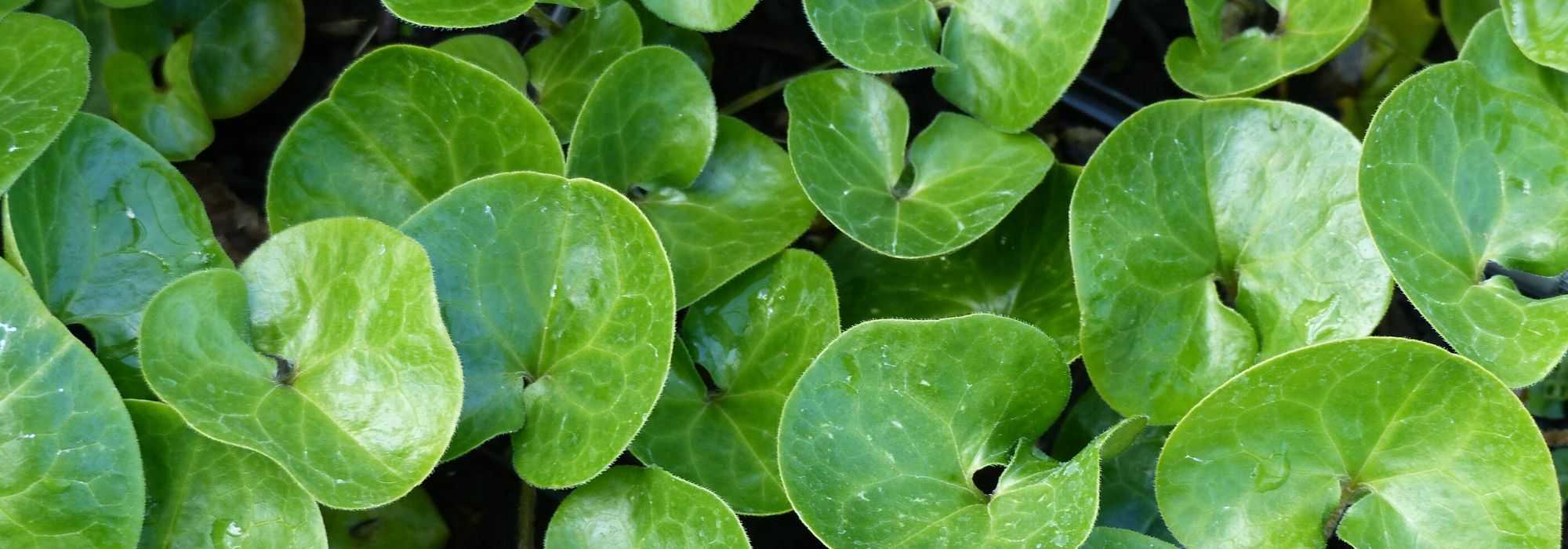
Asarum, Asaret: planting, growing and care
Contents
Asarum in a nutshell
- Asarum is a hardy groundcover perennial that thrives in cool shade
- It’s a treasure for a shady garden
- Its solid or variegated foliage persists in winter and forms sumptuous groundcovers in light woodland and cool soil
- Under its ample foliage, fascinating flowers, often purple, are hidden
- Hardy, easy to grow, and low-maintenance, it reduces weeding and allows you to dress the garden even in winter!
A word from our expert
Asarum or Wild Ginger is an excellent groundcover for shady, cool woodlands. In the garden, this creeping plant has the advantage of carpeting the ground with its foliage, often evergreen, adorned with lovely flowers in spring. The most common in our gardens is Asarum europaeum or European Wild Ginger, widely used in homeopathy, which easily establishes itself in woodlands, at the foot of trees, on slopes, and in cool rockeries. It can even be grown in pots!
The genus also includes several other interesting species such as Asarum caudatum, Asarum epigynum and Canadian Wild Ginger, Asarum canadense.
Well established in cool or moist soil, it gradually forms dense carpets of solid or variegated leaves depending on the species and varieties, concealing curious little flowers that deserve our attention!
Easy to grow and low maintenance, it prevents weeding and can even be a great substitute for lawn in cool, shady, and neglected corners!
There is no shortage of choice in our wide range; you are sure to find the Wild Ginger that suits you!
Description and Botany
Botanical data
- Latin name Asarum
- Family Aristolochiaceae
- Common name Asaret
- Flowering March to July
- Height 0.10 to 0.30 m
- Sun exposure Shade, partial shade
- Soil type Heather (Acidic), Neutral, cool, well-drained
- Hardiness -15°C
Asarum is a perennial groundcover plant belonging to the family Aristolochiaceae, like climbing aristolochias. L’Asarum europaeum or European asaret is a species that grows spontaneously in the east and north of France and up to 1,700 m in altitude. More broadly, asaret can be found in the undergrowth of deciduous or montane forests in many temperate regions of the northern hemisphere (North America, Asia, Siberia).
The genus comprises about 70 species of rhizomatous perennials, either deciduous or evergreen. It includes several species with sometimes variegated foliage or very original flowers. Alongside the European asaret, one can also find the Asarum canadense or “Canadian asaret”, Asarum epigynum or “Taiwan asaret”, Asarum caudatum or “wild ginger”, Asarum maximum or “giant asaret”, and Asarum splendens or “shining asaret”.
This creeping perennial slowly forms a carpet of leaves 5 to 25 cm high depending on the species (averaging 15 cm high) and spreads through its rhizomatous roots. The plant can cover up to 50 cm in diameter at maturity. These long rooting stems take root at each node, thickening here and there, without ever becoming invasive.
The aerial stems develop foliage that is most often evergreen depending on the severity of the winter. The shape and colour of the leaves vary according to the species.
In most cases, they are simple, entire, reniform (kidney-shaped) or cordate at the base (heart-shaped). They are petiolate, often solitary or arranged in opposite pairs, measuring 4 to 15 cm long and varying in width. These leaves sometimes resemble those of cyclamens. The large-leaved asaret (Asarum delavayi) offers leaves 2 to 3 times wider than the European asaret. The Asarum europaeum or “European asaret” features fleshy, leathery, round, dark green leaves that emit a camphoraceous and peppery odour when crushed, considered fetid. The leaves of Asarum caudatum exude a ginger scent.
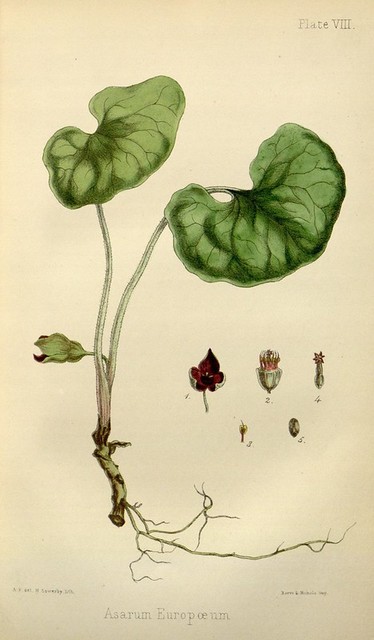
Asarum europaeum – botanical illustration
Some species stand out for their beautifully variegated foliage. The Asarum epigynum is distinguished by its beautiful, elongated, shiny leaves, bright green marbled with white, while Asarum splendens features dark green variegated foliage, broadly marbled and veined with silver. Asarum maximum ‘Giant’ displays splendid leaves combining two shades of icy green marbled with silver. More or less marbled and spotted with light green to bright green, medium green and silver, their epidermis, sometimes villous, is marked by prominent veins. Depending on the species, they may have a wrinkled appearance. Some exude an anise scent when crushed.
The flowers, often hidden beneath the foliage or resting on the ground, appear in spring or summer, depending on the species. The Asarum caudatum blooms in June-July, Asarum arifolium in May-June, and Asarum splendens a little earlier, as early as March.
This perennial hides a nest of fascinating flowers beneath its foliage. Each branch bears a small solitary flower composed of 3 fused sepals gathered in a campanulate purple or brown calyx. They open into very flared bells containing 12 stamens. They are almost flat in Asarum maximum. Carried by generally very short hairy peduncles, they measure from 1 to 8 cm wide for the largest. In Asarum caudatum or “Canadian asaret”, the sepals astonishingly taper into long acumen of 5 cm, hence its other nickname of long-tailed asaret.
They are burgundy red, wine red, plum to purplish-black. In Asarum delavayi and Asarum maximum ‘Giant’, they are bicoloured, a nearly black purple touched with large white spots. They exude a curious scent of mushroom or nutmeg.
These flowers easily produce globular capsules, more or less fleshy, containing seeds that are dispersed by ants.
Asarum is not afraid of cold or snow and can withstand negative temperatures down to -15°C. It is a shade to partial shade plant that fears overly hot exposures and will appreciate cool humus-rich soils in summer that are well-drained. It is among the best ground-cover perennials for shade.
Some asarets (Asarum caudatum, Asarum delavayi) are nicknamed “wild ginger” due to their rhizome that emits a lemony scent similar to that spice.
The Asarum europaeum is a common plant in phytotherapy and homeopathy used for its analgesic, expectorant, digestive, and emetic properties contained in its roots.
Read also
10 plants to create a shady rockeryMain species and varieties
Wild ginger (Asarum) comes in several species, among which the most common is Asarum europaeum, which grows spontaneously in our regions. Other wild gingers are equally interesting and offer a beautiful diversity of foliage and more or less discreet flowering.
The Most Popular
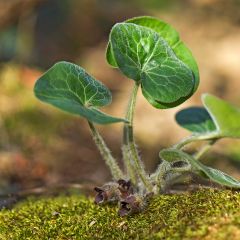
Asarum europaeum
- Flowering time July, August
- Height at maturity 15 cm
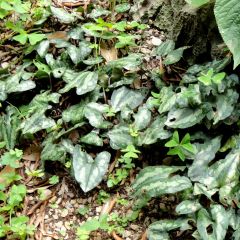
Asarum splendens
- Flowering time April to June
- Height at maturity 15 cm
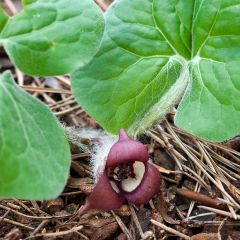
Asarum canadense
- Flowering time July, August
- Height at maturity 15 cm
Our Favorites
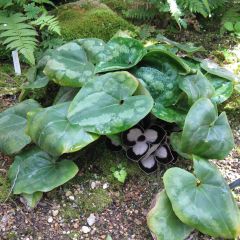
Asarum maximum Giant
- Flowering time April to June
- Height at maturity 15 cm
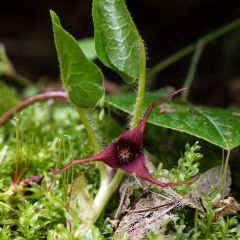
Asarum caudatum
- Flowering time June, July
- Height at maturity 15 cm
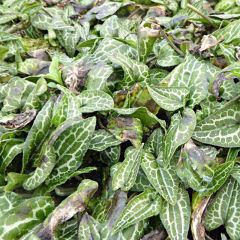
Asarum epigynum Takasago Saishin
- Flowering time April to June
- Height at maturity 15 cm
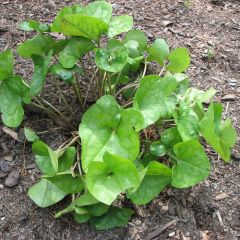
Asarum arifolium
- Flowering time April to June
- Height at maturity 20 cm
Discover other Asarum
View all →Available in 1 sizes

Available in 2 sizes
Available in 1 sizes
Available in 1 sizes
Available in 1 sizes
Available in 1 sizes
Available in 1 sizes
Available in 1 sizes
Available in 1 sizes
Planting of the asarum
Where to plant?
Asarum is more resistant to cold than to drought. It is hardy, down to -15°C, and its foliage will remain evergreen even in negative temperatures. Preferring cool soils, its cultivation will be more challenging in Mediterranean climates, which are too dry and hot in summer.
Asarum is a shade or partial shade plant, thriving in woodland conditions. It even flowers in dense shade.
It makes an excellent evergreen groundcover in woodlands, dressing up shady areas where nothing else grows, at the base of trees and bushes as it is not afraid of their roots, on slopes, along paths, in shaded borders, or in a cool rockery. It can even be planted in pots or containers, where it will spill over beautifully: an elevated planting will allow its unique flowering to be seen. It also helps to limit the proliferation of weeds in less accessible or less frequented areas of the garden.
When to plant?
Planting of Asarum should be done in spring from March to May, or in autumn from September to November, avoiding periods of frost and drought.
How to plant?
In the ground
Space the plants about 30 to 40 cm apart and count 5 plants per m² to create a beautiful carpet of lush foliage.
- Dig a hole 2 to 3 times wider than the root ball
- Place the plant in the centre of the hole, keeping the collar of the root ball level with the soil
- Cover with a mixture of good rich compost
- Firm down
- Water generously and then regularly to encourage establishment
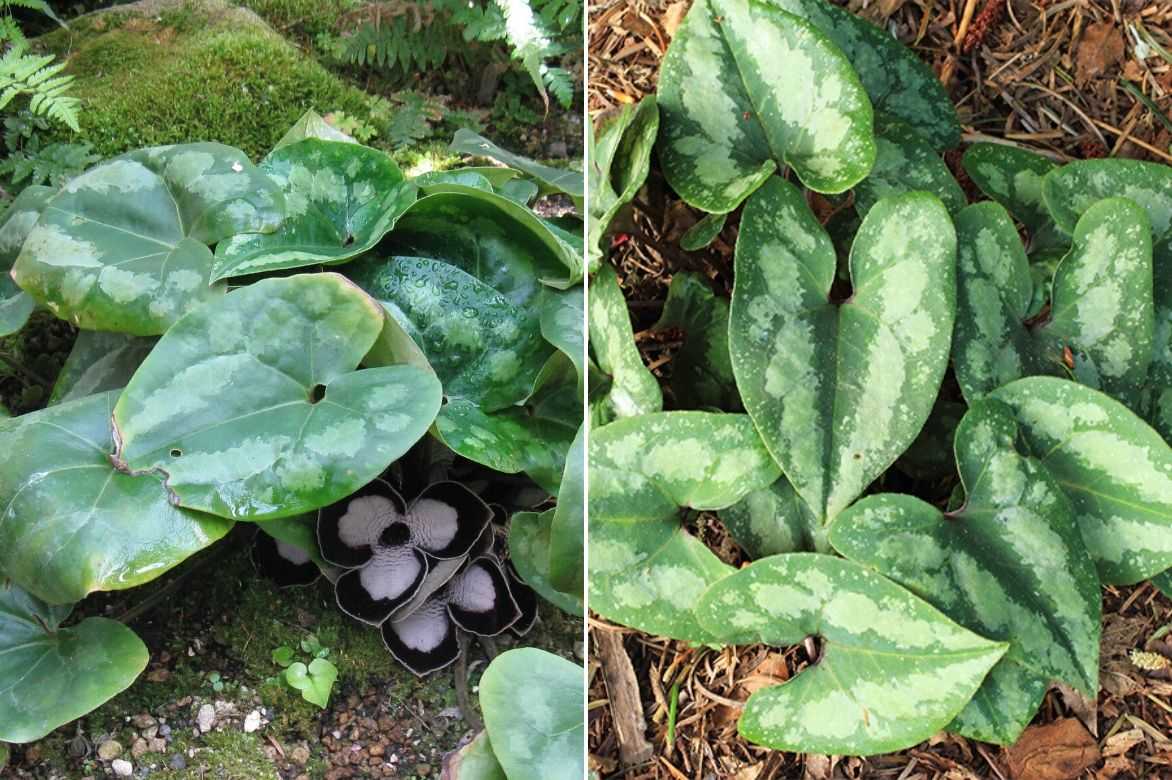
Asarum maximum ‘Giant’ with its stunning bicolour flowers and Asarum splendens with its marbled foliage veined with silver
Care of Asarum
Asarum is low-maintenance when planted in shade and requires little care.
Just ensure to water it regularly during the first year of growth, then 1 to 2 times a week during hot weather. In pots as well as in the ground, it needs sufficient moisture at the base, especially in summer or if it doesn’t rain. It will tolerate occasional droughts once well-rooted.
Surround the plants with a vegetal mulch (straw, leaves…) to limit evaporation at the base of the plants.
Each spring, add some compost at the base.
In cold regions, protect the stump with dead leaves.
Divide the clumps every 2-3 years to limit their spread.
In spring, follow our advice to protect its young foliage from slugs and snails.
Multiplication
Asarum easily naturalises itself through its underground rootstocks and spontaneous sowing. Dividing clumps in spring before flowering, or in early autumn, is also straightforward to carry out.
Dividing Clumps
- Using a fork, lift a section of the stump
- Divide it into several well-rooted sections
- Replant these parts immediately in the ground or in pots
Associate with the garden
Asarum is an essential groundcover in shade gardens where its evergreen foliage in solid or variegated hues brightens up cool areas and slightly forgotten corners.
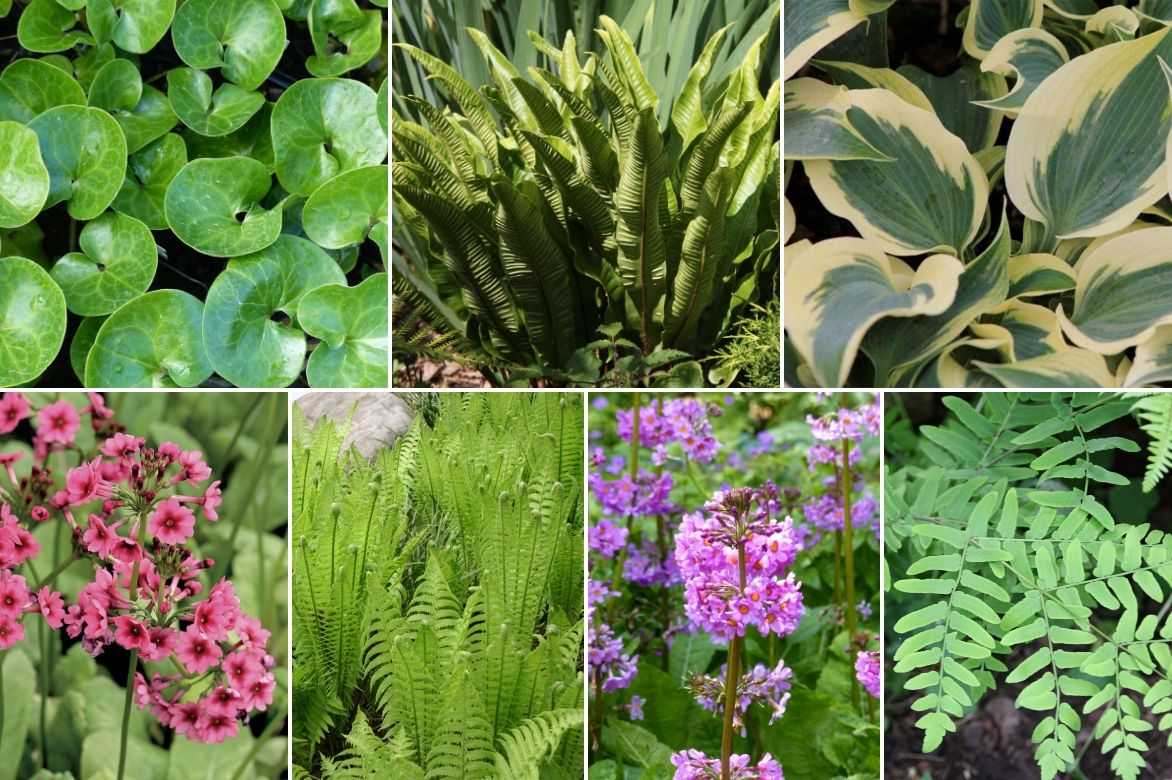
An example of shade association: Asarum europaeum, Phyllitis scolopendrium, Hosta ‘Great Escape’, Primula japonica ‘Miller’s Crimson’, Matteuccia struthiopteris, Primula beesiana and Osmunda regalis ‘Purpurascens’
It will pair wonderfully with other shade-loving perennials such as ferns, alchemilla, and hostas. At the edge of woodlands, in cool rockeries, or in fresh borders, it accompanies epimediums, Hakonechloa, saxifrages, and lamiums.
Varieties with variegated foliage will create a bright contrast with the vivid pink of bergenias, cyclamen, and Dicentra.
It forms beautiful carpets at the base of heather soil shrubs that thrive in shade or partial shade, such as camellias or rhododendrons. It creates fresh scenes with many small spring bulbs like crocuses, muscari, primroses, or hyacinths.
Under trees, it will mingle with other shade groundcover perennials to create a subtle carpet of foliage, such as heucheras, brunnera, Acaena, geranium nodosum, and Vinca minor.
Useful resources
- What good groundcover as an alternative to lawn?
- What to plant under my trees?
- What are the best plants to grow in woodland?
- Subscribe!
- Contents
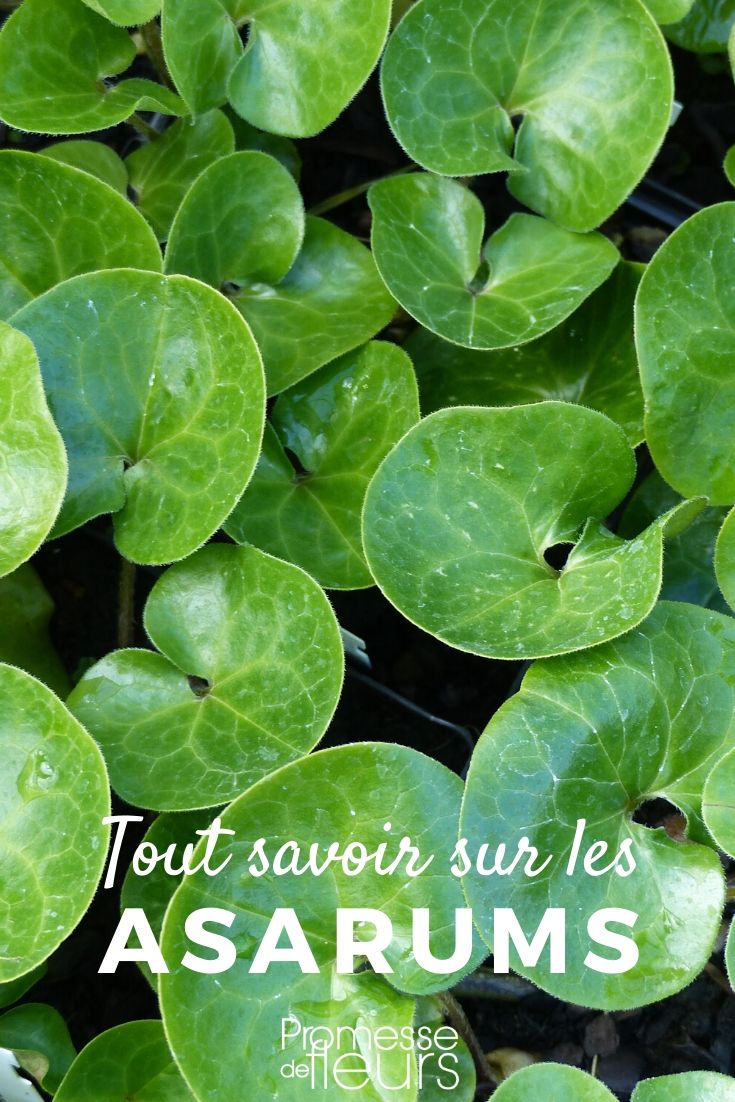
































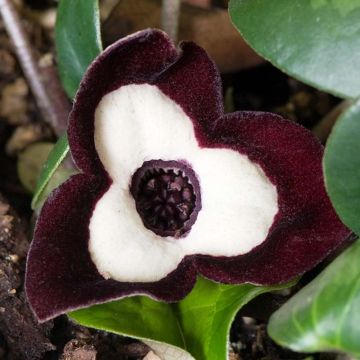



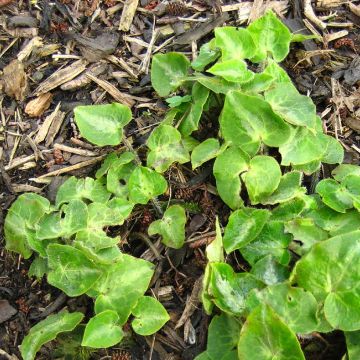


Comments